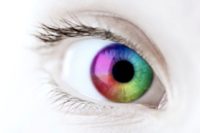Any activity that requires intense use of the eyes -- such as extended amounts of driving or reading -- can cause eye fatigue. These include extended periods of:
- Reading
- Writing
- Driving
Exposure to bright light or straining to see in dim light can also cause eye fatigue
One of the most common causes of eye fatigue is staring for long periods at digital devices such as:
- Computer screens
- Smartphones
- Video games
This type of eye fatigue or eye strain is sometimes known as computer vision syndrome. It affects about 50%-90% of computer workers. Some estimates say computer-related eye symptoms may be responsible for up to 10 million primary care eye examinations each year.
The problem is expected to grow as more people use smartphones and other hand-held digital devices.
Research shows that people hold digital devices closer to their eyes than they hold books and newspapers. That forces their eyes to work harder than usual as they strain to focus on tiny font sizes.
Digital devices may also be linked to eye fatigue because of a tendency to blink less often when staring at a computer screen. People usually blink about 18 times a minute. This naturally refreshes the eyes. But studies suggest that people only blink about half as often while using a computer or other digital device. This can result in dry, tired, itching, and burning eyes.
Symptoms of Eye Fatigue
Eye fatigue is associated with uncomfortable and annoying symptoms, such as:
- Sore or irritated eyes
- Difficulty focusing
- Dry or watery eyes
- Blurred or double vision
- Increased sensitivity to light
- Pain in the neck, shoulders, or back
These symptoms can decrease your productivity. They may be intensified by sleep deprivation. During sleep, the eyes are replenished with essential nutrients. Lack of sleep may result in persistent eye irritation.
Prevention of eye fatigue
Usually eye fatigue can be prevented or reduced by making simple changes in your work habits or environment.
Here are some prevention tips from organizations such as Prevent Blindness, the National Eye Institute, and Get Eye Smart:
- Make changes to your computer screen, such as:
- Place the screen 20-26 inches away from your eyes and a little below eye level.
- Regularly clean off dust and fingerprints from the screen. Smudges on the screen can reduce contrast and increase problems with glare and reflections.
- Choose screens that tilt and swivel.
- Consider using a glare filter over your screen.
- Make changes to your work environment, such as:
- Change lighting to reduce glare and harsh reflections.
- Use an adjustable chair.
- Place a document holder next to your computer screen.
- Make changes to your work habits, such as:
- Try the 20-20-20 rule. Every 20 minutes, look away about 20 feet in front of you for 20 seconds.
- Post a note that says "Blink" on the computer as a reminder.
- Take regular breaks from computer work.
- Take care of your eyes with these steps:
- Apply a washcloth soaked in warm water to tired, dry eyes (with eyes closed).
- Use artificial tears to refresh your eyes when they feel dry.
- To help prevent dry eyes while working indoors, use an air cleaner to filter dust and a humidifier to add moisture to the air.
If you have eye fatigue or pain, you should see an eye doctor for an evaluation in case there is an underlying medical condition.
If eye fatigue persists despite these simple interventions, make an appointment with an eye doctor for a comprehensive eye exam to ensure that your glasses or contact lens prescription is up to date and adequate for computer use.
Your eye fatigue may be related to an underlying condition such as an eye muscle imbalance. Or it may be due to a need for glasses or a change in your present eyeglass prescription. Occupational glasses may be needed for some people with the syndrome. A single or bifocal lens, or tinted lens material, may help increase contrast perception and filter out glare and reflective light to reduce symptoms of eye strain
Source: WebMD









